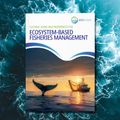EcoScope tools and implementation of the EU fisheries action plan
Author: Ana Rodriguez, European Marine Board
On 21 February 2023, the European Commission adopted a new Action Plan for fisheries called “Action plan: Protecting and restoring marine ecosystems for sustainable and resilient fisheries”. This action plan contributes to delivering the Biodiversity Strategy for 2030 and its commitment to legally and effectively protect 30% of European Seas, with one-third being strictly protected.

The three objectives of the action plan are to:
- Contribute to reaching and keeping fish stocks at sustainable levels
- Reduce the impact of fishing on the seabed, and
- Minimise fisheries impacts on sensitive species, such as dolphins, harbour porpoises, sea birds, sharks and sea turtles.
The main actions to achieve these objectives are:
- Phasing out mobile bottom fishing in marine protected areas (MPAs) by 2030, and
- Increasing the selectivity of fishing gear, protecting sensitive species and applying measures to reduce their bycatch.
Further actions to achieve these objectives are to support the fisheries sector in the transition by maximising the use of available funds, strengthening the knowledge base, research and innovation, improving implementation, monitoring and enforcement, and improving governance, stakeholder involvement and outreach.
The EU-funded EcoScope Project aims to promote effective and efficient, ecosystem-based approach to fisheries management. Part of its remit is to develop an interoperable platform and a robust decision-making toolbox. The EcoScope tools will be able to advise on how best to achieve some of these objectives, including suggesting possible management options to minimise bycatch of the species selected by Member States, modelling the effects of excluding trawling from all MPAs as required in the action plan, and suggesting which areas are most suited for the 10/30% MPA expansion, as required in the Biodiversity Strategy for 2023. In addition, it is important to note that this action plan is not legally binding. Therefore, another important contribution EcoScope could make is to model the effects of different levels of compliance with the action plan. For instance, the models could answer questions such as “what are the ecological and socio-economic consequences of different degrees of bottom trawling (e.g. 0%, 20%, 60%) in MPAs”, or “what are the ecological and socio-economic consequences of not complying with the maximum allowable seabed disturbance value, which will be agreed on by Member States soon” .





